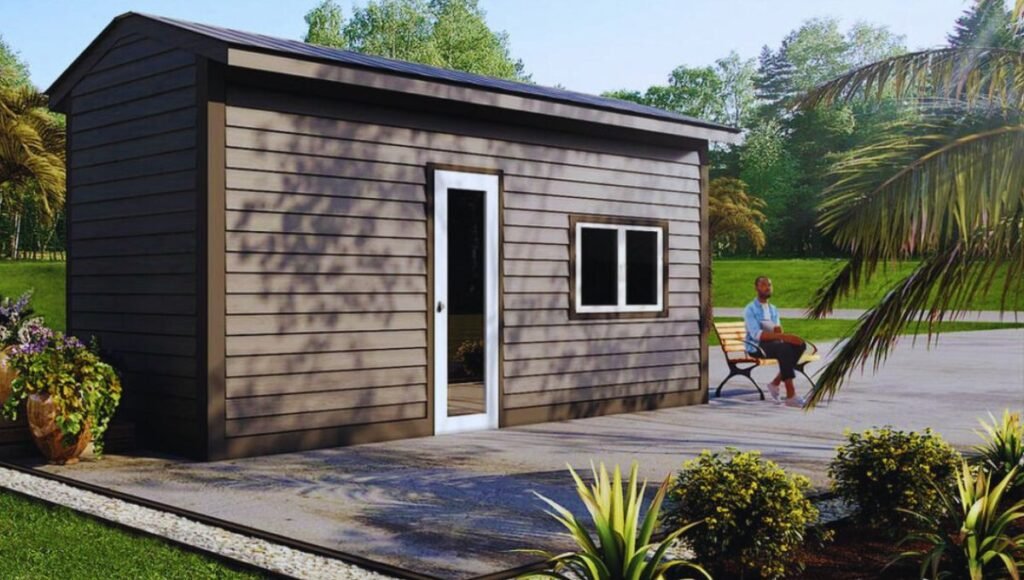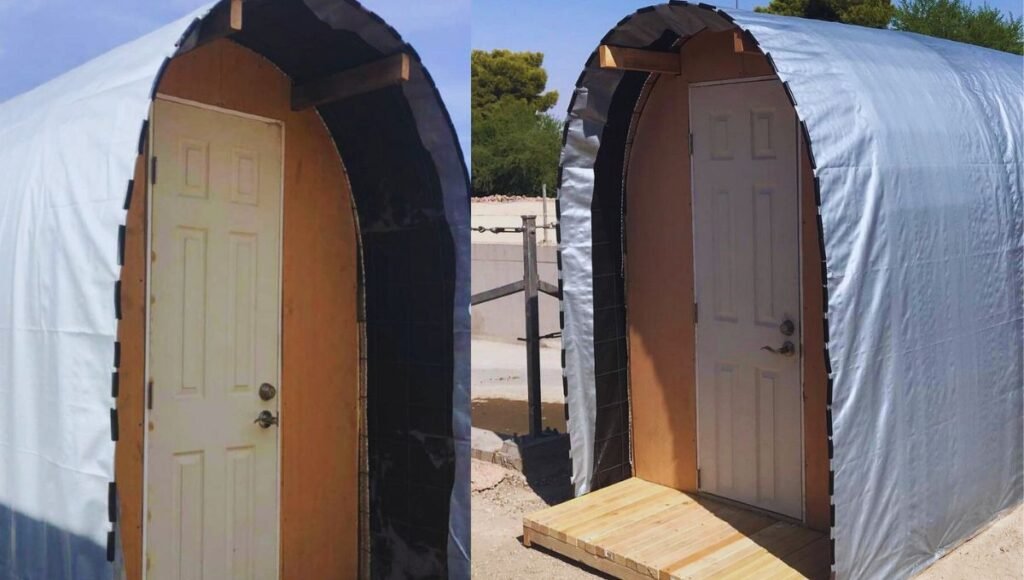When you ponder Miami’s strict tiny home codes, it’s crucial to take into account the city’s complex zoning laws designed to manage land use and population density while addressing environmental concerns. These regulations aren’t just bureaucratic red tape; they guarantee tiny homes meet safety standards and use sustainable materials. Miami’s approach aims to preserve community character and protect its delicate environment, but it also raises questions about how these codes impact the growing need for affordable housing. So, what drives these stringent measures, and what implications do they have for the future of urban development in Miami?
Key Takeaways
- Preservation of Community Character: Strict codes ensure tiny homes align with existing community aesthetics and property values.
- Safety Compliance: Enforces rigorous safety standards to guarantee structural integrity, fire safety, and reliable electrical systems.
- Environmental Protection: Minimizes ecological disruption, promotes sustainable land use, and safeguards Miami’s delicate coastal ecosystem.
- Resource Management: Controls population density to reduce strain on water, energy, and infrastructure resources.
- Urban Planning: Mitigates urban sprawl and encourages efficient land use to maintain balanced urban development.
Historical Background
Miami’s journey toward developing tiny home codes began in the early 2000s, driven by a growing need for affordable housing solutions. You can trace this effort back to the city’s historic influences and urban evolution.
Miami’s architectural heritage and the influx of new residents shaped these developments. In the early days, the city’s building practices were influenced by Spanish colonial architecture, which emphasized compact living spaces. Over time, Miami’s urban evolution led to denser, more vertical housing solutions.
As the city grappled with increased population density, it became clear that innovative housing models, like tiny homes, were essential. These historical and urban factors played an important role in setting the stage for Miami’s stringent tiny home codes.

Zoning Laws
When exploring zoning laws in Miami, you’ll need to take into account land use restrictions, which dictate where tiny homes can be situated. These regulations also address density and population control, ensuring that the community’s infrastructure can support the number of residents.
Additionally, environmental considerations play an important role, impacting how these homes interact with their surroundings and sustainability goals.
Land Use Restrictions
Understanding the intricate web of zoning laws, you’ll find that land use restrictions play a critical role in determining where tiny homes can be built in Miami. These regulations are governed by municipal ordinances that meticulously outline property rights and permissible land uses.
Each zoning district has specific guidelines on building types, dimensions, and placement, aiming to preserve community character and property values. For instance, residential zones may prohibit tiny homes to maintain consistency with existing structures. Additionally, setbacks, lot sizes, and other spatial constraints are enforced to guarantee safety and proper urban planning.
Density and Population Control
To effectively manage urban growth, zoning laws in Miami impose strict density and population control measures that directly influence where and how tiny homes can be developed. These regulations aim to mitigate urban sprawl and guarantee efficient resource management. By limiting the number of tiny homes per acre, Miami can control population density and reduce strain on infrastructure and public services.
| Factor | Impact on Tiny Homes |
|---|---|
| Zoning Restrictions | Limits areas where tiny homes can be built |
| Density Regulations | Controls the number of units per acre |
| Infrastructure | Assures adequate support services |
| Resource Management | Balances usage of water, energy, etc. |
| Urban Sprawl Control | Prevents overexpansion of urban areas |
You must navigate these complex zoning laws to successfully establish tiny home communities in Miami.
Environmental Considerations
Environmental considerations in Miami’s zoning laws directly dictate the placement and development of tiny homes, guaranteeing minimal ecological disruption and promoting sustainable land use.
These regulations prioritize water conservation by mandating efficient plumbing systems and rainwater harvesting solutions. You’ll find that restrictions also include limitations on impervious surfaces to reduce runoff and preserve natural water cycles.

Additionally, zoning laws emphasize wildlife protection by establishing buffer zones around habitats and migration corridors. These codes ensure that tiny homes don’t encroach on critical ecosystems.
By adhering to these stringent guidelines, you help maintain Miami’s delicate environmental balance, safeguarding both the area’s natural resources and its diverse wildlife.
Understanding these nuances is essential for successfully navigating Miami’s tiny home development landscape.
Safety Standards
Miami’s tiny home safety standards mandate rigorous adherence to structural integrity, fire safety protocols, and electrical system requirements to guarantee occupant protection. You need to make sure that the building materials used are high-quality and durable to withstand Miami’s unique climate. Advanced construction techniques, including proper insulation and moisture barriers, are essential to prevent structural degradation.
| Safety Standard | Key Requirement |
|---|---|
| Structural Integrity | High-quality building materials |
| Fire Safety | Advanced construction techniques |
| Electrical Systems | Adherence to local codes |
Fire safety protocols require the installation of smoke detectors, fire extinguishers, and flame-resistant materials. Electrical systems must comply with stringent local codes to prevent hazards like electrical fires. Following these standards ensures your tiny home isn’t just cozy but also safe and reliable.
Environmental Concerns
Incorporating sustainable building materials and energy-efficient systems in your tiny home can greatly diminish your environmental footprint. Miami’s strict tiny home codes address significant environmental concerns like coastal erosion and water pollution. By using eco-friendly materials, you reduce the need for harmful chemicals that could leach into the soil and waterways, thereby mitigating water pollution.
Energy-efficient systems cut down on emissions, preserving the delicate coastal ecosystem. These codes also enforce robust stormwater management practices, essential for minimizing coastal erosion. Proper drainage systems prevent runoff from destabilizing the shoreline.
Housing Affordability
By adhering to sustainable building practices, you not only help protect the environment but also tap into the financial benefits that come with housing affordability in Miami’s tiny home market. The stringent codes might seem restrictive, but they offer a structured path to maximize cost-efficiency. Here’s how you can benefit:
- Tax Incentives: Miami offers specific tax incentives for eco-friendly constructions, reducing your overall financial burden.
- Rental Markets: Tiny homes are increasingly popular in rental markets, providing a steady income stream.
- Lower Utility Costs: Sustainable designs mean lower utility expenses, making tiny homes even more affordable long-term.
Future Developments
Looking ahead, you’ll find that advancements in building technology and regulatory frameworks are poised to reshape Miami’s tiny home landscape. Emerging construction methods, such as 3D printing and modular designs, promise to make tiny homes more affordable and sustainable.
Regulatory updates could introduce more lenient zoning laws, aligning with the city’s growing cultural diversity and demand for flexible housing solutions. Given Miami’s status as a hub for tourist attractions, integrating tiny homes into the urban fabric can offer unique lodging experiences, catering to visitors seeking alternative accommodations.
Conclusion
You’ve seen how Miami’s tiny home codes balance strict regulations with a pressing need for affordable housing. While these codes may seem restrictive, they’re crafted to guarantee safety, environmental sustainability, and urban efficiency.
It’s a delicate dance between preserving community character and adapting to modern housing needs. By understanding this juxtaposition, you’ll appreciate the intricate framework that aims to create a sustainable, yet affordable, urban living environment in Miami.